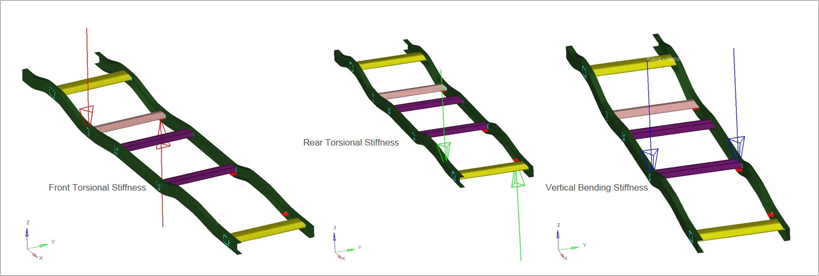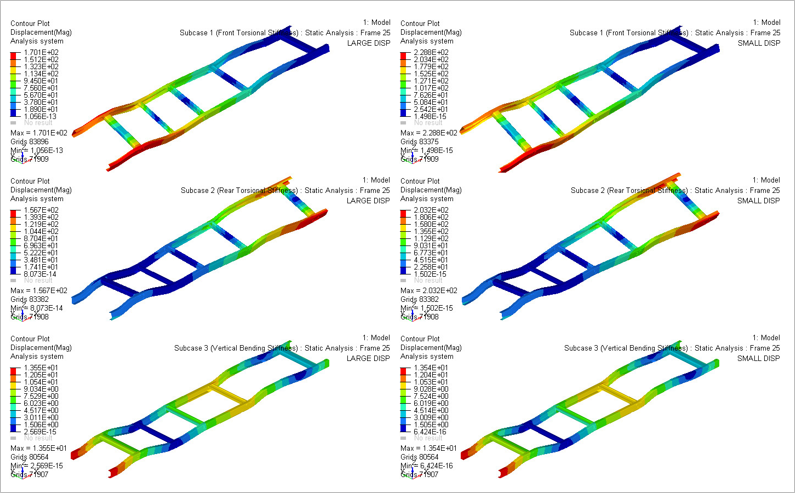OS-E: 0150 Large Displacement Analysis of Chassis
Demonstrates the use of 2D plate (shell) elements with large displacement analysis.

Figure 1. FE Model
Model Description
- 1
- Front torsional stiffness
- 2
- Rear torsional stiffness
- 3
- Vertical bending stiffness
Displacements (translations and rotations), which are large enough to render small deformation theory invalid; therefore, the initial stiffness matrix is not suitable to represent the problem. This may result in either small or large (finite) strains. Large displacements are those that are greater than the characteristic dimension of the model (thickness of the beam plate or shell). This is always a nonlinear problem. A typical rule of thumb, if strains exceed 5%, always switch LGDISP=1.
- FE Model
- Element Types
- CQUAD4
- MAT1
- Young’s Modulus
- 2.1E5 MPA
- Poisson Ratio
- 0.3
- Density
- 7.85E-9
- MATS1
- YIELD Point
- 350
Results

Figure 2. Stress Contour and Plastic Strain Plot
Model Files
The model files used in this example include:
<install_directory>/demos/hwsolvers/optistruct/examples/SHELL_LGDISP.fem